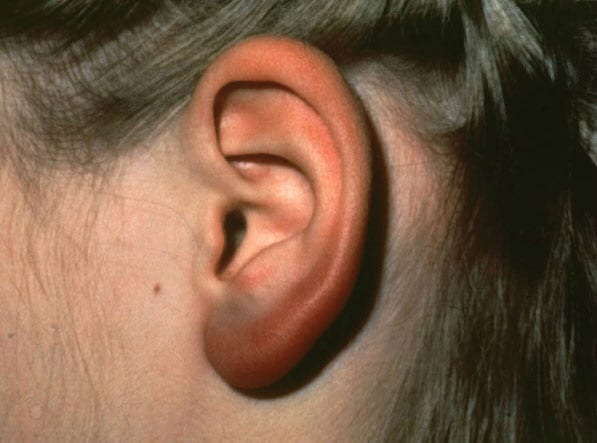Part 2: when and where did I contract Lyme disease?
Back in September when I received the inconclusive results showing two Lyme disease antibodies, I didn't give this question much thought. The new decisive results prompted me to track down more info.
I have been bitten by plenty of wood ticks, but I have never noticed any of the tinier deer ticks that are the primary North American vectors (then again, I hear they're easy to overlook). As is frequently the case, I did not develop the circular rash that is the classic early infection sign of Lyme disease. And although many of my recent ailments that I've reported are shared by others with Lyme disease, none are definitive because virtually all of the later stage symptoms have numerous alternative causes (which is why later stage Lyme disease is rarely identified by mainstream physicians).
All in all, there didn't seem to be much to go on in order to figure out where or when I got it.
Reading about Lyme disease on Wikipedia, I noticed that Lyme disease can cause Borrelial lymphocytoma, a purplish lump on the ear:
I've had this twice in the past year and a half. Both times it subsided within a week or so without treatment, ending with a thick black scab that fell off. Reviewing my iPhoto album, I found a picture taken on May 20, 2008, during a Boundary Waters' trip where my red swollen earlobe is clearly visible!

However, Borrelial lymphocytoma has not been reported in North America, and is instead associated with European Lyme disease via the B. afzelli and B. garinii strains (the Bb sensu stricto strain predominates in the New World).
Aha! (Quite possibly.)
I've been to Great Britain twice in the past 5 years. The main European vector for Lyme disease is the sheep tick, and during both trips I did plenty of hiking through sheep fields.
The more recent trip -- to the Lake District in July 2007 -- is the top suspect. It was much warmer then than it was during the March 2004 trip through Wales. I'm not sure about deer or sheep ticks, but I know wood ticks are much more active at warmer temperatures.
Also, I developed a small, clear, occasionally weepy blister on my arm -- "pill-shaped" rather than circular -- after one Lake District hike. At the time, I thought it might have been an allergic reaction to some plant I scraped. (I still have no idea if this blister had anything to do with Lyme; I haven't seen any reported association.) When it persisted for over a week after I returned home, and started getting itchy, I finally saw a dermatologist who prescribed prednisone and it cleared up. In retrospect, this was unfortunate because prednisone suppresses the immune system, which may have helped the disease spread in my body.
I have been bitten by plenty of wood ticks, but I have never noticed any of the tinier deer ticks that are the primary North American vectors (then again, I hear they're easy to overlook). As is frequently the case, I did not develop the circular rash that is the classic early infection sign of Lyme disease. And although many of my recent ailments that I've reported are shared by others with Lyme disease, none are definitive because virtually all of the later stage symptoms have numerous alternative causes (which is why later stage Lyme disease is rarely identified by mainstream physicians).
All in all, there didn't seem to be much to go on in order to figure out where or when I got it.
Reading about Lyme disease on Wikipedia, I noticed that Lyme disease can cause Borrelial lymphocytoma, a purplish lump on the ear:

I've had this twice in the past year and a half. Both times it subsided within a week or so without treatment, ending with a thick black scab that fell off. Reviewing my iPhoto album, I found a picture taken on May 20, 2008, during a Boundary Waters' trip where my red swollen earlobe is clearly visible!

However, Borrelial lymphocytoma has not been reported in North America, and is instead associated with European Lyme disease via the B. afzelli and B. garinii strains (the Bb sensu stricto strain predominates in the New World).
Aha! (Quite possibly.)
I've been to Great Britain twice in the past 5 years. The main European vector for Lyme disease is the sheep tick, and during both trips I did plenty of hiking through sheep fields.
The more recent trip -- to the Lake District in July 2007 -- is the top suspect. It was much warmer then than it was during the March 2004 trip through Wales. I'm not sure about deer or sheep ticks, but I know wood ticks are much more active at warmer temperatures.
Also, I developed a small, clear, occasionally weepy blister on my arm -- "pill-shaped" rather than circular -- after one Lake District hike. At the time, I thought it might have been an allergic reaction to some plant I scraped. (I still have no idea if this blister had anything to do with Lyme; I haven't seen any reported association.) When it persisted for over a week after I returned home, and started getting itchy, I finally saw a dermatologist who prescribed prednisone and it cleared up. In retrospect, this was unfortunate because prednisone suppresses the immune system, which may have helped the disease spread in my body.